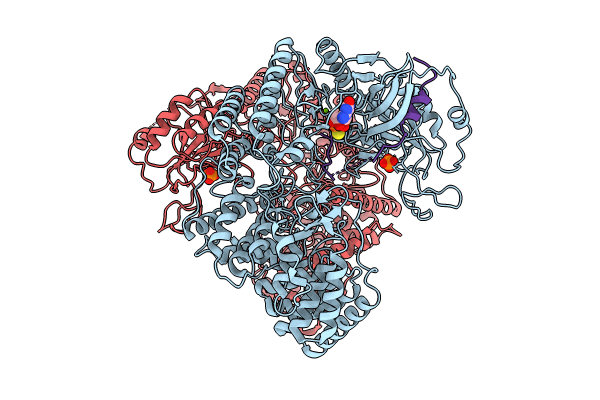
Deposition Date
2023-09-22
Release Date
2024-08-28
Last Version Date
2025-07-02
Entry Detail
PDB ID:
8WGO
Keywords:
Title:
Cryo-EM structure of ClassIII Lanthipeptide modification enzyme PneKC in the presence of PneA and GTPrS.
Biological Source:
Source Organism:
Streptococcus pneumoniae (Taxon ID: 1313)
Host Organism:
Method Details:
Experimental Method:
Resolution:
3.00 Å
Aggregation State:
PARTICLE
Reconstruction Method:
SINGLE PARTICLE


